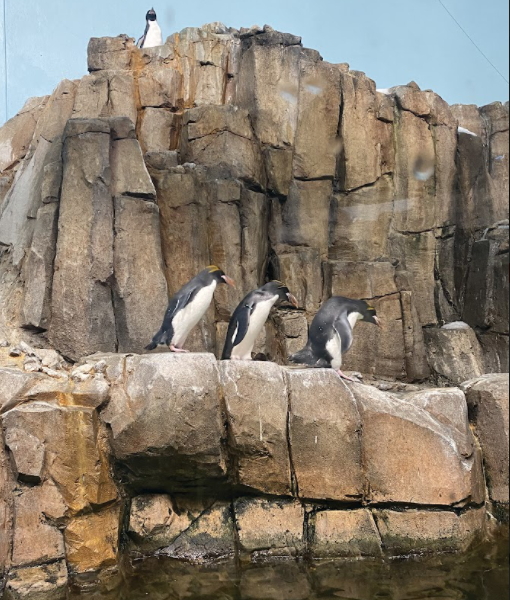Montreal’s Biodome is part of the Space for Life complex, a network that includes four other museums––the Biosphere, the Botanical Garden, the Insectarium, and the Rio Tinto Alcan Planetarium. The network aims to provide educational and research opportunities that prioritize sustainability and biodiversity protection.
Researchers at the Biodome have access to a living laboratory, which acts as a hub for projects related to ecology, habitat protection, urban wildlife, and animal ethics. With five ecosystems under one roof, the centre boasts a collection of over 130 different animal and plant species. After paying a visit to the centre on a rainy day, The McGill Tribune has compiled a list of our favourite animals found in each ecosystem.
Tropical rainforest – Capybara
Often found hanging around the rainforest’s bodies of water, the capybara spends its days munching on leaves, rolling in the dirt, or cooling off in the water. Capybaras can grow as large as 1.3 metres long and can weigh up to 68 kilograms, making them the largest rodents alive today. To communicate, these overgrown guinea pigs bark, whistle, and click, and can typically be found in groups of 20 with a large male at their helm.
Fun fact: In the wild, capybara’s backs are prime real estate for birds hoping to hitch a ride or catch some rays.
Laurentian maple forest – Canada lynx
One of Canada’s largest felines, the Canada lynx can be identified by its disproportionately large paws and black tufts of hair on its ears. As excellent climbers and jumpers, the lynx is often on the hunt for hares, of which they consume as many as 200 per year. Mostly found in Canada, Alaska, and the northern United States, they tend to spend most of their time alone, roaming four to 20 kilometres a day.
Fun fact: The Canada lynx can jump as far as seven metres.
Gulf of St. Lawrence – Moon jellyfish
Made up of 98 per cent water, moon jellyfish are basically the celery of the sea. Much like anemone and coral, moon jellyfish use their tentacles (all 1,200 of them) to capture their prey. The nematocysts covering each tentacle release a stinger that injects a paralyzing agent into the plankton and larvae that make up their diet.
Fun fact: Contrary to popular belief, peeing on a jellyfish sting will not actually make it feel better.
Subantarctic Islands – Macaroni penguin
These medium-sized, flightless arctic birds are recognizable by their yellow head tufts, similar to those of the rockhopper penguin, which you can also find at the Biodome. The most ecologically vulnerable species on this list, macaroni penguins have experienced a population decline ranging between 30 to 65 per cent over the past 30 years, depending on the study conducted. They only come onto land to moult and reproduce, spending most of their time in the sea, where they find their diet of krill, fish, and cephalopods.
Fun fact: When colonizers first saw these penguins, they called them “macaronis” after the 18th century fashion trend referenced in the song “Yankee Doodle.”
Labrador coast – Atlantic puffin
Atlantic puffins are easily identified by their matching orange beaks and feet. The small birds tend to nest around cliff sides when they aren’t looking for fish to eat. While they may have the macaroni penguin beat when it comes to their flying abilities, Atlantic puffins are hardly experts––to keep themselves in the air, they must flap their wings 300 to 400 times per minute.
Fun fact: The Atlantic puffin can catch up to 60 fish in one dive.









